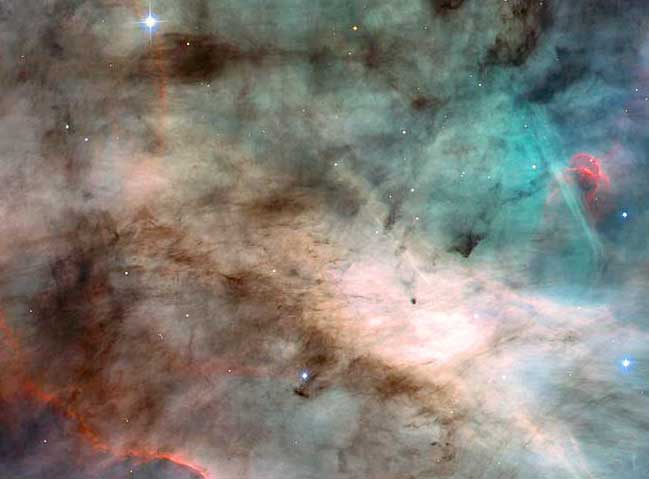
|
Credit & Copyright: ACS Science & Engineering Team,
Explanation:
In the depths of the dark clouds
of dust and molecular gas
known as the Omega Nebula, stars continue to form.
The above image from the Hubble Space Telescope's Advanced Camera for Surveys shows exquisite detail in the
famous star-forming region.
The dark dust filaments that lace the center of Omega Nebula were created in the atmospheres of cool giant stars and in the debris from supernova explosions.
The red and blue hues arise from glowing gas heated by
the radiation of massive nearby stars.
The points of light are the young stars themselves, some
brighter than 100 Suns.
Dark globules mark even younger systems, clouds of gas and dust just now
condensing to form stars and planets.
The Omega Nebula lies about 5000 light years away toward the constellation of Sagittarius.
The region shown spans about 3000 times the diameter of our Solar System.
|
January February March April May June July August September October November December |
| ||||||||||||||||||||||||||||||||||||||||||||||||
NASA Web Site Statements, Warnings, and Disclaimers
NASA Official: Jay Norris. Specific rights apply.
A service of: LHEA at NASA / GSFC
& Michigan Tech. U.
Based on Astronomy Picture
Of the Day
Publications with keywords: Omega nebula - HST - M 17
Publications with words: Omega nebula - HST - M 17
See also:
